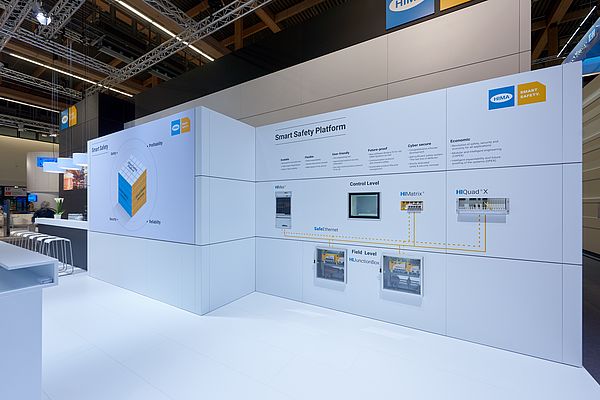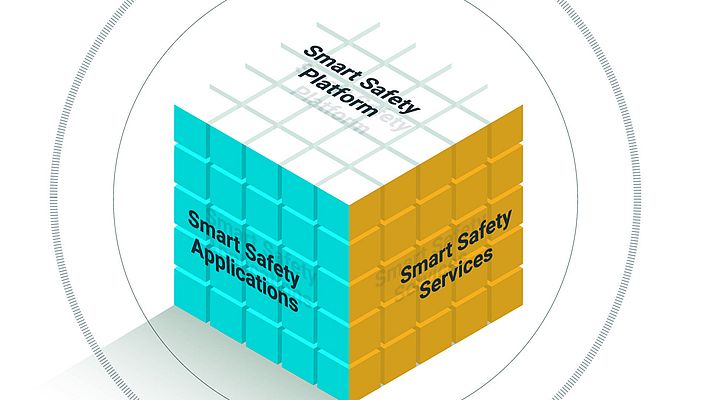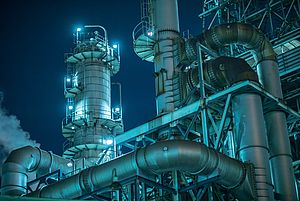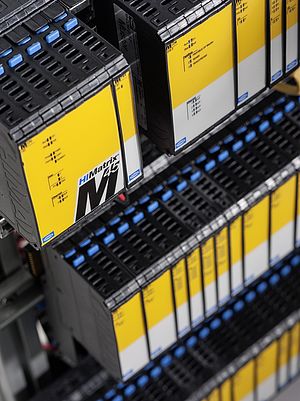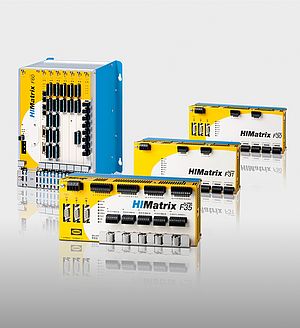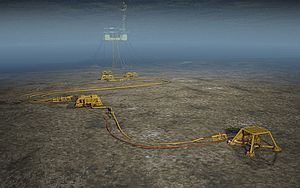Is there a way to combine safety and security in a unique solution that tailors hardware and software to each other and fulfills the requirements of long-term availability and safety standards, while the system is always kept secure and up-to date? Stefan Basenach, Group Vice President Segment Process at Hima, told us how his company made it possible
IEN Europe: At Achema 2018, on the occasion of its 110-year anniversary, Hima launched its Smart Safety Platform, which combines safety and security. What are the advantages of this combination?
S. Basenach: The Smart Safety Platform is the world's first comprehensive solution that combines safety and security by uniformly tailoring hardware and software to each other. It also supports integration of existing systems, enabling lower operating costs and very high security of investment. The uniform hardware and software basis of the Smart Safety Platform reduces the effort and expense necessary for operation and maintenance of safety systems. By migrating to this platform, plant operators fulfill all essential safety standards. The proprietary self-contained operating system of the safety controllers minimizes the risk of cyberattacks. Backward-compatible software and hardware updates make the system highly future-proof and keep plant safety and security constantly up to date.
IEN Europe: Hima’s new HIQuad X controller is part of the Smart Safety Platform. Now, all Hima controllers can be combined freely for any application. How does it work?
S. Basenach: The HIQuad X controller is an important component of the Smart Safety Platform as it fills the gap between the high-performance Himax and the Himatrix, which is designed for smaller applications. All HIMA controllers are now united in the new Smart Safety Platform. They can communicate with each other over SafeEthernet, and they have a uniform operating system and the same programming environment. Plant operators receive a scalable solution that enables them to meet the complete safety and security requirements of a full range of applications, from small individual systems to the complex architectures of large plants, in a need-oriented manner.
IEN Europe: Hima claims that Smart Safety Platform reduces maintenance costs, but what about the complexity of the system?
S. Basenach: The Smart Safety Platform uses identical basic components across all HIMA product families. Thanks to the holistic approach to safety and security, companies can use a solution from a single source and significantly reduce the complexity of their systems. The platform also simplifies extensions and system modifications. Both localized and centralized concepts can be implemented flexibly with the platform.
IEN Europe: At Achema, you presented Safety as a three-dimension concept. The first dimension is the Smart Safety Platform, the second Smart Safety Applications and the third Smart Safety Services. Can you explain how these three dimensions interact and which benefits they produce?
S. Basenach: While the Smart Safety Platform is basically a technology platform as described above, our Smart Safety Applications describe our holistic approach to develop the best safety solution for each application together with our customers, i.e. by using proven standardized safety application solutions. Last, but not least, Smart Safety Services encompass all HIMA service and consulting services related to safety and security, which help the process industry address the big challenges of new regulatory requirements.
The combination of all three dimensions offers operators in the process industry the opportunity to get a future-proof safety platform with security build-in, tailored application engineering as well as safety trainings and consulting from one single source. Customers benefit from HIMA’s strong back record and extensive experience in safety-critical applications.
IEN Europe: What’s Hima’s definition of “Smart Safety”’?
S. Basenach: Smart Safety means that Hima offers solutions and services that help customers to protect plants, people, and the environment and increase profitability in a more and more digitized environment. The concept combines functional safety with cybersecurity and end-to-end services from consulting to engineering to qualification based on the four pillars safety, security, reliability and profitability. This concept builds the basis for the above mentioned three pillars.
IEN Europe: What is the hardest challenge connected to safety?
S. Basenach: One of the hardest challenges in the area of safety is finding the right balance between innovation and long-term availability. On the one hand we speak of plant lifecycle times of 20 to 30 years and more. On the other hand, digitization has accelerated innovation cycles and plant operators expect answers to these challenges today rather than tomorrow. This means, that we have to be quicker than ever in research and development and in implementing new technology. On the other hand, the strict legal and complex operational requirements in the process industry mean that we have to introduce innovation with great caution within existing systems.
IEN Europe: What is the hardest challenge connected to security?
S. Basenach: The hardest challenge here is to bring safety and security together in a way that systems are robust enough to resist any current or future cyber-attack without changing the approved functional safety architecture. Safety and security lifecycles, although being similar in some points, vary quite a lot when it comes to time frames. While the nature of security sets the requirement to do regular software updates, we have to make sure, that functional safety systems continue to work as per original setup. One answer to this challenge is implementing security in safety systems right from the start as we do with the Smart Safety Platform. Another answer lies in the system architecture of the safety system in the application. To prevent changes within the security lifecycle, i.e. security patches for the safety system, impairing the safety lifecycle, the two areas must be decoupled – here we can share the latest industry knowledge of how to do this best.
Sara Ibrahim


